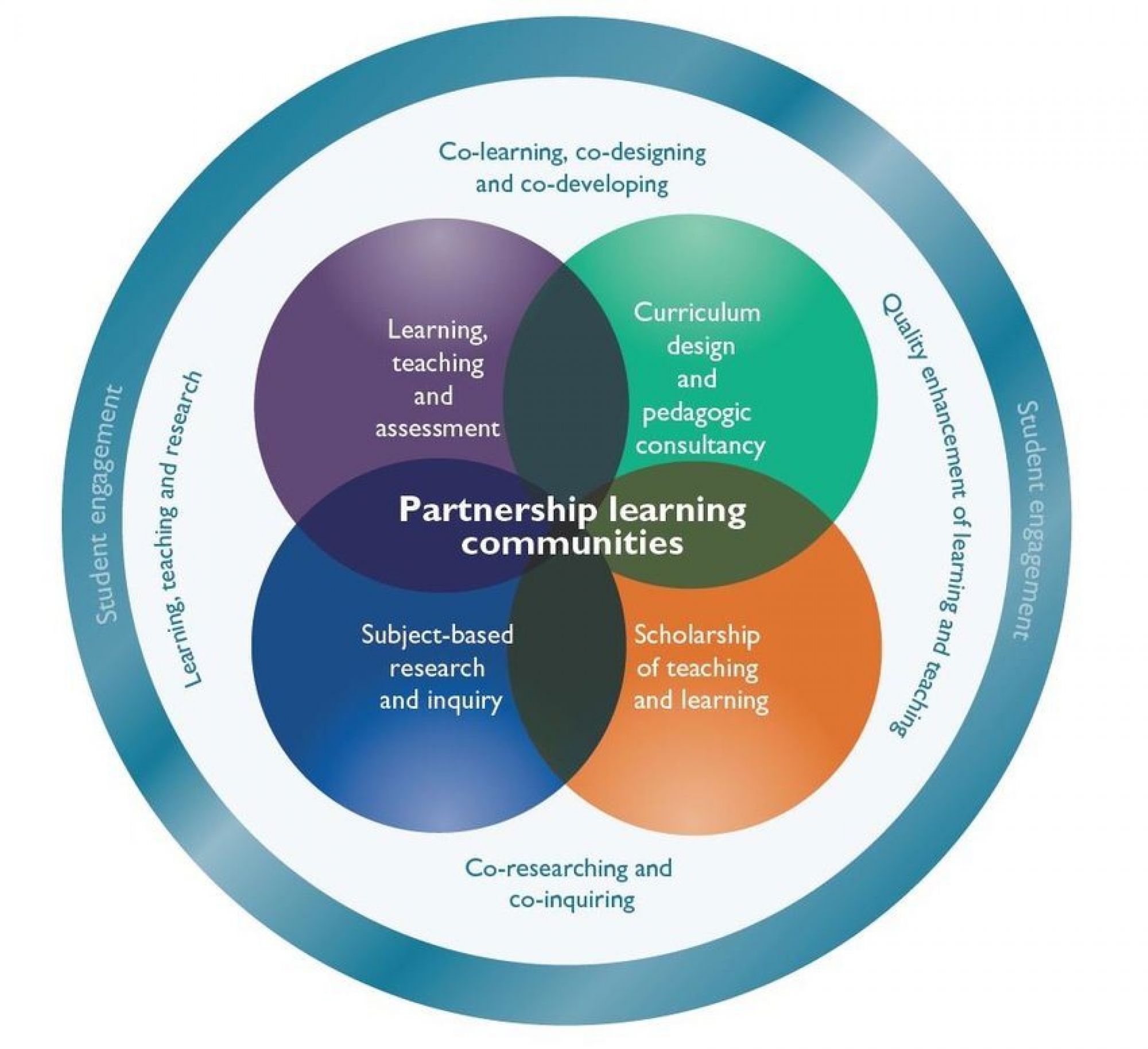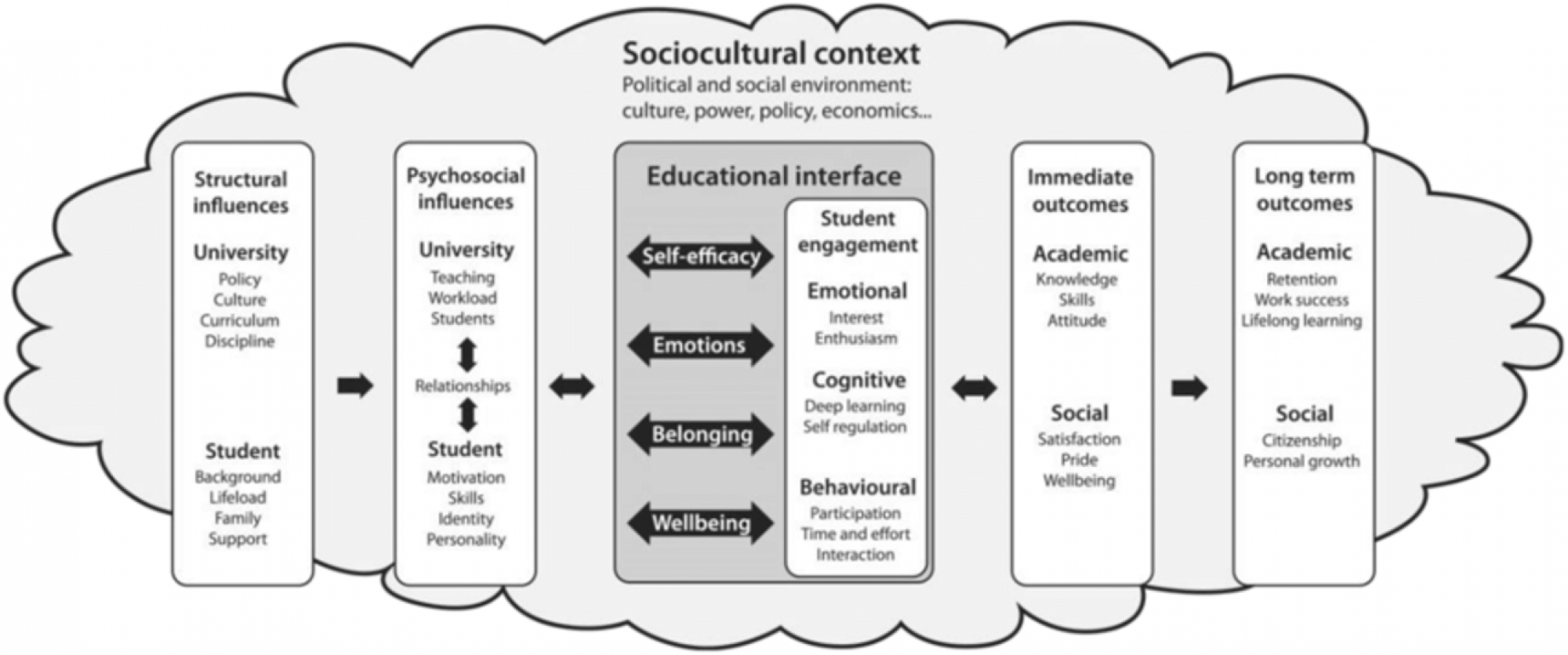Student Engagement
What is evident from the literature about student engagement (Harrington, Sinfield and Burns, 2016; Bryson, 2014a; Kahu, 2013) is that there isn’t an agreed definition of what it is or what it excludes, and that existing paradigms can be shaped by a complex range and interplay of historical, socio-economic and disciplinary interests.
However there seems to be some consensus that student engagement is best understood as existing on a continuum in a number of domains which encompass cognitive, emotional and behavioural aspects. Schlecty's, (2002), levels of engagement, (that is based on an intersection of attention and commitment), is also a useful lens to consider. Much recent research emphasises the multifactorial nature of student engagement and its increasing relevance to the achievement of institutional and societal as well as individual developmental goals.
Central to the concept, as reflected in much recent research, is the notion of the individual student (with unique characteristics and attributes) being an active, rather than a passive participant in the learning process and that this disposition is facilitated and sustained through reciprocal relationships with other students and staff (staff-student partnerships).
Staff-Student Partnership
Healey, Flint and Harrington (see Figure 1: overview model) suggest that:
Partnership is understood as fundamentally about a relationship in which all involved – students, academics, professional services staff, senior managers, students’ unions, and so on – are actively engaged in and stand to gain from the process of learning and working together.
Partnership is essentially a process of engagement, not a product. It is a way of doing things, rather than an outcome in itself.
(2014, p12)
Students as Partners in learning and teaching in higher education – an overview model

Student Engagement and Partnership
Kahu (2013) believes that some authors are striving to draw together diverse strands of theory and research on student engagement. She has examined the literature from four research perspectives:
- the behavioural perspective (focusing on the behavioural dimension);
- the psychological perspective (includes behavioural and cognitive dimensions but is particularly focused on the emotional dimension);
- the socio-cultural perspective (focuses on the impact of the broader social context on student experience);
- the holistic perspective (a key feature of this approach is its recognition of the significant role of emotion in student engagement).
Kahu, Picton and Nelson (2019) in a recent longitudinal study of first-year students illustrate (see Figure 2 below) how student and university factors interact to influence engagement, as conceptualised in the framework.
The findings provide empirical support for the framework of student engagement, offering a more nuanced understanding of the student experience within the framework’s educational interface.
The importance of domain specific self-efficacy, belonging, emotions and wellbeing
The importance of domain specific self-efficacy, belonging, emotions and wellbeing as interwoven pathways to student engagement is demonstrated and the contextual and dynamic nature of engagement highlighted.
The role of student partnerships and relationship-building
The role of student partnerships and relationship-building can be seen under the psychosocial influences both influencing and being influenced by the educational interface and student engagement.
Refined conceptual framework of student engagement incorporating the educational interface

See also Ulster’s Student Learning Experience Principals
At Ulster, CHERP and UUSU have been developing student partnership work since 2012 and this table [Table of Ulster Student Partnership Activities since 2012] summarises some of these activities and the key outcomes of this work.
Research carried out (Curran, 2017) brings new understanding to stakeholders in relation to how the impact of partnership on individual students and staff members can help us think holistically about student engagement.
There is evidence that the personal development of both students and staff is a welcome outcome of partnership working and one which has the potential to enhance skills, motivation, and confidence of not just students but staff, too. In turn, this personal development can enhance the learning climate, which is important for extending the benefits of partnership working to all students - going beyond the small numbers that tend to put themselves forward for partnership type activities.
The stage of curriculum design or re-design may be an opportune time to embed these enhanced learning climates resulting from a Students as Partners ethos.
Involvement Strategy for Learning and Teaching
Involving people who use services within programmes aligned to health and social care promotes authenticity, and positively impacts on the student experience.
The output of a SLATE project that focused on the development of tools to involve service users in a consistent and effective way has been recently completed.
The website for the project outputs can be viewed on sharepoint.
References
- Bryson, C. (2014). Clarifying the concept of student engagement. In: Bryson, C. (ed.) Understanding and developing student engagement. Abingdon: Routledge, 1-22.
- Curran, R. (2017). Students as Partners—Good for Students, Good for Staff: A Study on the Impact of Partnership Working and How This Translates to Improved Student-Staff Engagement. International Journal for Students As Partners, 1(2).
- Kahu, E., Picton, C. and Nelson, K. (2019) Pathways to engagement: a longitudinal study of the first-year student experience in the educational interface.
- Harrington, K., Sinfield, S. and Burns, T. (2016). Student engagement. In: Pokorny, H. and Warren, D. (eds.) Enhancing teaching practice in higher education. London: Sage, 106-124.
- Healey, M., Flint, A. and Harrington, K. (2014). Engagement through partnership: students as partners in learning and teaching in higher education. York: HEA. Retrieved from Engagement through partnership
- Kahu, E. (2013). Framing student engagement in higher education, Studies in Higher Education, 38 (5), 758-773.

